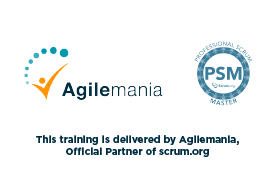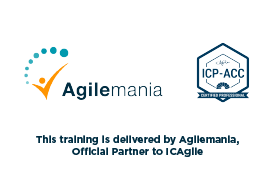
1:1 Coaching
Earn 16 PDUs and 16 SEUs
Globally Renowned SPCs trainer
High Success Rate Guarantee
One Year Scaled Agile Membership
Constant Learning Support
Course Description
During this three-day course, attendees will explore the roles, responsibilities, and mindset of Agile Architects, and appreciate how to align architecture with business value and drive continuous flow to large systems-of-systems while supporting SAFe program execution. This course is for senior technical contributors who need to understand the role of System, Solution, and Enterprise Architects in Lean-Agile enterprises.
Learning Objective
After this course, attendees will be able to:
- Articulate the Product Owner and Product Manager role.
- Connect SAFe Lean-Agile principles and values to the PO/ PM roles.
- Decompose Epics into Features and decompose Features into Stories.
- Refine Features into Stories.
- Manage Program and Team backlogs.
- Collaborate with Agile teams in estimating and forecasting work.
- Represent Customer needs in Program Increment Planning.
- Execute the Program Increment and deliver continuous value.
Certification Curriculum
 Exemplifying Lean-Agile architecture
Exemplifying Lean-Agile architecture
Agile Architecture is a set of values, practices, and collaborations that support the active, evolutionary design and architecture of a system. This approach embraces the DevOps mindset, allowing the architecture of a system to evolve continuously over time, while simultaneously supporting the needs of current users.
This cover :-
- Agile ArchitectureM
- SAFe Architect roles and collaborations
- Architect using SAFe principles
 Architecting for DevOps and Release on Demand
Architecting for DevOps and Release on Demand
Agile architecture fosters a DevOps culture by ensuring Solutions are architected for continuous delivery. Architects participate in the design and execution of the CD pipeline and evangelize and exemplify SAFe’s CALMR principles. They allow decisions to emerge by defining minimum viable (‘just enough’) architecture, ensuring loose coupling between system elements, supporting the creation and evolution of interfaces, and fostering architecture as code through common annotations, attributes, and naming conventions.
This cover :-
- Fostering DevOps culture
- Describing how value flows through the Continuous Delivery Pipeline
- Architect for and facilitate Continuous Exploration
- Architect for Continuous Integration
- Architect for Continuous Deployment
- Architect for Release on Demand
 Aligning architecture with business value
Aligning architecture with business value
In the Digital Age, businesses rely on technology to deliver value to their customers. As business strategy changes, the technology, systems, and business applications that deliver that strategy must change with it.
This cover :-
- Describe how Strategic Themes, portfolio canvas and Portfolio Vision influence architecture
- Explain how Value Streams support the business
- Explain how Solution trains and Agile Release Trains deliver value
 Developing Solution Vision, Solution Intent, and Roadmaps
Developing Solution Vision, Solution Intent, and Roadmaps
Aligning architecture with business strategy accelerates business goal achievement. Architects realize business objectives by translating strategy from strategic themes into solutions. Those solutions are defined by their Vision, Solution Context, and Solution Intent. Roadmaps define a plan to realize the solution. Architects and teams collaboratively define enablers in the roadmap that explore technical options and build the architecture runway, providing early feedback on achieving those milestones. Teams provide feedback on architectural decisions as they build feature on top of it, balancing intentionality and emergence. The roadmap drives the Backlog which defines all work for an ART. Architects collaborate with Product Management on prioritizing and balancing new functionality with technical work. They anticipate technical debt impediments to flow and architectural runway needs and advocate for their prioritization.
This cover :-
- Align Solution Vision with Strategic Themes and Solution Context
- Contribute to Solution Intent
- Manage quality with non-functional requirements (NFRs) and Lean Quality Management System (QMS)
- Contribute to Roadmaps
 Preparing architecture for Program Increment (PI) Planning
Preparing architecture for Program Increment (PI) Planning
Each increment, teams build the highest priority Features and Enablers. Architects collaborate with Product Management to define and prioritize these near-term work items. They provide feasibility insights that help define and scope current Features and their acceptance criteria. They also consider future Features and define Enablers in the backlog for teams to explore and gain knowledge that ensures the future Feature’s viability.
This cover :-
- Contributing to the Program Backlog
- Sequence and prioritize work in the Program Backlog
- Contribute to Solution pre-PI Planning
Prerequisites
All are welcome to attend the course, regardless of experience. However, the following prerequisites are highly recommended for those who intend to take the SAFe® Architects certification exam.
5+ years of experience in software development, testing, business analysis, product or project management
Download Brochure
IBF Accredited SAFe® Architect (ARCH) Certification Training Singapore Program offers a 2-days Certification training, aimed at building SAFe knowledge, that can lead to your Certified SAFe® Architect (ARCH). Download the brochure and check the different Focus Areas covered within these 2 days of training.
Certification Assessment
All participants completing the SAFe Architect Certification Training will receive a password to attempt the Certification Training assessment for the same. The participants need to attempt the SAFe Architect assessment within 30 days of receiving their free password and score at least 75% to pass the exam in order to get certified.
Retake policy – Immediately after the first attempt, the second attempt on the exam (first retake) can be taken. While there is a 10- day wait period for the third attempt; the fourth attempt necessitates a 30-day wait time.
- High Success rate
- Join Our Dynamic Community
- Training from Recognized Trainer
- Post-workshop support by the Coaches
Testimonials
Our clients praise us for our great results, personable service, expert knowledge, and on-time delivery. Here are what just a few of them had to say:
About Funding Detail
- SAFe® Architect (ARCH) Certification Training Singapore is aligned with the IBF Standards, which are developed in close consultation with the industry.
- IBF accredited programme designed to meet industry standards and well equip with the competencies needed for the jobs.
- upto 90% subsidy for Singapore Citizens and Permanent Residents. Participants need to pay 10% + GST to attend the training.
- This program has been certified under the IBF Standards and is qualified for subsidizing under the IBF Standards Training Scheme (IBF-STS), subject to all qualification criteria being met.
Training FAQ's
Take the 3-day SAFe® for Architects training instructed by SAFe Program Consultants (SPCs). It costs you around INR 1.2 Lac certification included along with one-year membership to the SAFe Community Platform.
Yes, this certification needs to be renewed every year.
There are no such prerequisites to take this course. Also, it’s always recommended for those who intend to take the SAFe® Architect (ARCH) training & certification exam should have been part of the ART and PI.
The SAFe® Architect (ARCH) certification exam is an online test comprising 45 multiple-choice questions. Participants will have 90 minutes (1.5 hours) to complete the exam and must score a minimum of 73% (33 correct out of 45) to pass the SAFe® Architect (ARCH) exam and obtain your SAFe® Architect (ARCH) certification.
You can retake the assessment and each retake attempt costs $50. Second attempt on exam (first retake) can be done immediately after the first attempt. Third attempt requires a 10-day wait. Fourth attempt requires a 30-day wait.
Download and print your Certificate from the Manage Profile & Professional Development. Certifications/Programs tab (click on the paper icon to the left of the Certification Name). Please note that when printing the certificate there can be missing logos and signatures from the certificate. If you come across this issue please make sure that “Background Colors and Images” is selected in your printing options.
Scaled Agile, Inc. is the certifying body of the Scaled Agile Framework® (SAFe®).
As a response to the COVID-19, we have moved our classes online. Our Live Virtual format delivers the same benefits as our face-to-face training: expert instruction, hands-on labs and exercises, peer-to-peer collaboration, and high-quality instructional material.
Attendees may be eligible to apply for 16 PDUs toward their continuing education requirements with the Project Management Institute (PMI) for PMP, PgMP, and PMI-ACP certifications.
Please send in an email to enquiry@agilitics.sg, and we will answer any queries you may have!
SAFe Architect (ARCH) Certification Training
The SAFe for Architects Training course prepares System, Solution, and Enterprise Architects to engage across the organization as effective leaders and change agents who collaboratively deliver architectural solutions.
During this three-day course, attendees of the Safe for Architects Training Workshop will explore the roles, responsibilities, and mindset of Agile Architects, and appreciate how to align architecture with business value and drive continuous flow to large systems-of-systems while supporting SAFe program execution. This course is for senior technical contributors who need to understand the role of System, Solution, and Enterprise Architects in Lean-Agile enterprises.
In this workshop, the attendees will be equipped with the skills to enable continuous value flow and contribute to a Lean-
Agile enterprise. By understanding the key roles, responsibilities, and mindset of an Agile architect you will get an overview of how Agile architects deliver business values, as powerful change agents. Acting as a powerful catalyst to an enterprise, the role of an Agile architect is extremely important in a Safe enterprise as they align architecture into business strategies to accelerate business goal achievement.
Architects and teams collaboratively define enablers in the roadmap that explore technical options and build the architecture runway, providing early feedback on achieving those milestones. Teams provide feedback on architectural decisions as they build features on top of it, balancing intentionality and emergence. The roadmap drives the Backlog which defines all work for an ART. Architects collaborate with Product Management on prioritizing and balancing new functionality with technical work. They anticipate technical debt impediments to flow and architectural runway needs and advocate for their prioritization.
Become a Safe Architect with Agilitics by your side and improve collaboration and alignment in a Lean Enterprise as you work as a major change agent and oversee the workflow on a broader spectrum and deliver transforming architectural solutions.






